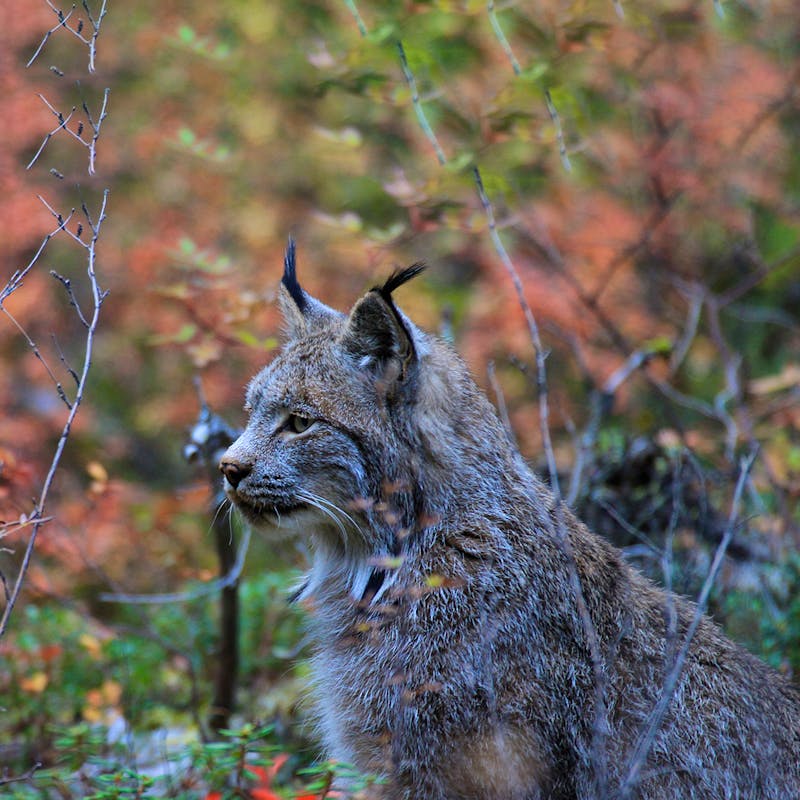Tiger Mail
Next time you purchase U.S. postage stamps, ask for the “Save Vanishing Species” series and help protect some of the world’s most imperiled species.
At 55 cents a stamp, the extra 11 cents goes to the U.S. Fish and Wildlife Service to support the Multinational Species Conservation Funds, which will divide much-needed resources among tiger, rhino, sea turtle, great ape and Asian and African elephant conservation projects. Defenders of Wildlife worked as part of a coalition to pass the congressional bill that made this stamp possible, providing a convenient way for Americans to contribute to the protection of threatened and vanishing species across borders.
The U.S. Postal Service made five million sheets of stamps available—but plans to print more given customer demand. What a great incentive to surprise your loved ones with a message the old-fashioned way.
Wolves to the Rescue
It’s not for nothin’ that wolves are the top dogs.
As wolves return to the West, scientists have focused much of their research on how wolves help recover overgrazed ecosystems. Turns out wolves could also play an important role in helping to save the Canada lynx, an animal protected as threatened under the Endangered Species Act in 2000.
A key factor in lynx decline is the significant loss of snowshoe hares, according to new research from scientists at Oregon State University, the University of Washington and the University of Wyoming. Hares are the big-pawed cats’ primary prey. But in the decades-long absence of wolves, coyotes—with their own habit for hares—filled the void. Their population surged and expanded in all directions from their original habitat in the Great Plains.
“Before they were largely extirpated, wolves used to kill coyotes and also disrupt their behavior through what we call the ‘ecology of fear,’” says ecologist William Ripple, lead author of the study. “Coyotes have a flexible, wide-ranging diet, but they really prefer rabbits and hares, and they may also be killing lynx directly.”
In many scientific studies in recent years, researchers have documented how wolves and other large predators help keep deer and elk populations in check, allowing the recovery of trees, shrubs and streams to the benefit of many plant and wildlife species.
“This study provides yet another reason why wolves are so important,” says David Gaillard, Defenders’ Northern Rockies representative. “As these scientists concluded, the ecological role of these top predators and the number of them it takes to fulfill a wide range of ecological goals should be considered when determining how many wolves should be maintained in our wild areas.”
Walrus Woes in a Warming Arctic
As if melting ice weren’t enough—or maybe because of it—scientists across various U.S. government agencies are trying to figure out why some walruses along Alaska’s northern coasts started turning up with unusual and festering pock marks peppering their bodies late last summer.
Researchers ruled out tusk wounds because the abscesses are different from fight scars, which heal quickly. Lesions have also been found in the respiratory system, liver, heart and brain of close to 50 dead ringed seals, according to the National Oceanic Atmospheric Administration.
It’s possible that the animals are fatigued from being forced to swim longer distances to find food and it’s compromising their immune system, says Rosa Meehan, chief of the Marine Mammals Management division of the U.S. Fish and Wildlife Service. Walruses use sea-ice as platforms to rest between dives for clams. But warmer waters caused by climate change are making stable ice chunks harder to come by.
Meanwhile, Defenders is co-sponsoring a project led by the Alaska SeaLife Center to remotely monitor walruses during the summer bachelor haul-out months in Bristol Bay. “The information collected will help scientists learn more about these understudied animals while they try to adapt to their changing world,” says Karla Dutton, Defenders’ Alaska program director.
Only select articles from Defenders are available online. To receive 4 issues annually of the full award-winning magazine, become a member of Defenders of Wildlife!



